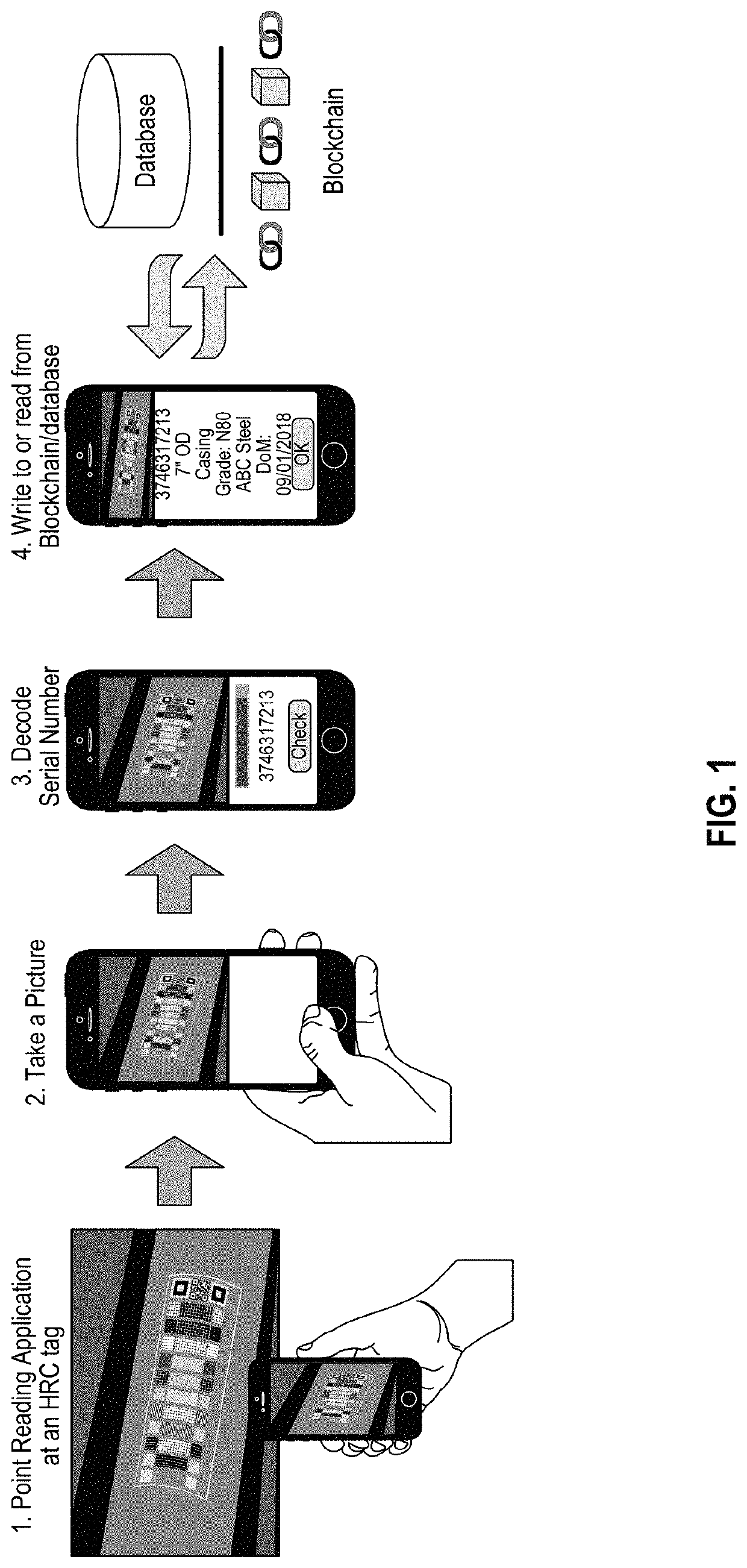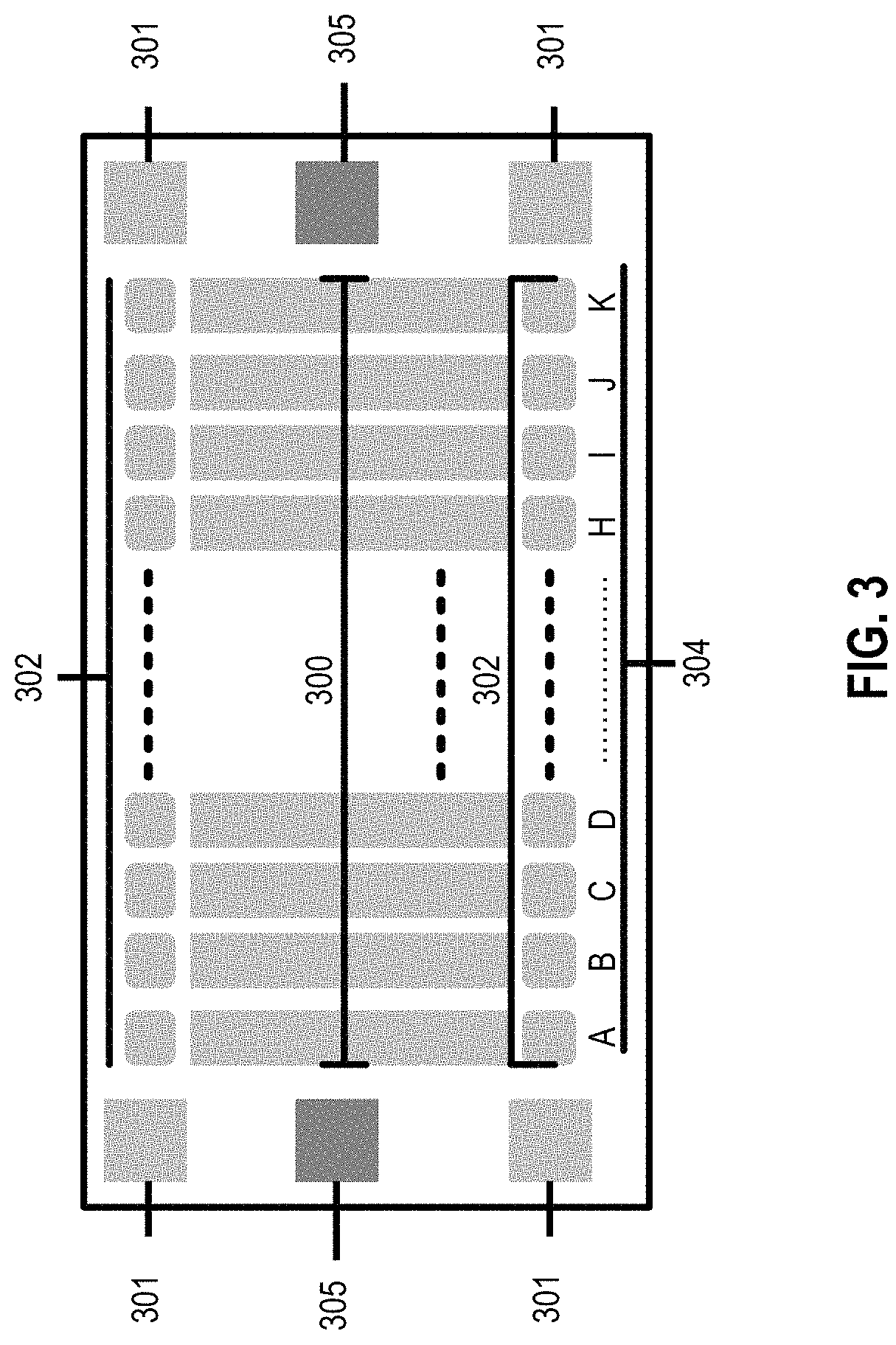As aggregation and disaggregation is frequent during distribution, tracking only at lot-level can be inadequate.
However, tracking at the individual
pipe-level (also known as joint-level) is largely non-existent.
None of these attempts have been successful due to the unique challenges posed by the nature of OCTG pipes, harsh storage environments, demanding usage conditions, and complicated supply-chain structures.
However, such implementations have various disadvantages and difficulties in implementation for the OCTG use-case.
While the approach constitutes a simple extension to an existing practice and is easy to implement, it has major downsides including: (a) stencils are hard to make
machine-readable and require human transcription, (b) they are not suitable for passive reading from a distance, which is a key requirement from a fast-invoicing perspective, (c) stencils traditionally do not last for long and are prone to
fading and degeneration with time and
corrosion of pipe, (d) they do not include any kind of error-correction or error-detection ability.
Such solutions have multiple issues, including: a) The RFID tags or 2D
barcode stickers cannot be attached to pipe itself as any addition to the pipe must be removed before the pipe is put downhole (i.e. installed in the well).
Hence, the tags are attached to endcaps and
threat protectors, which are prone to breakage and are replaced frequently.
Re-associating a replacement end-cap or protector that has a new tag with the pipe is error-prone and process-intensive. b) Further, during
Quality Control (QC) checks and pipe preparation steps, the caps of multiple pipes are removed, put in a
pile, and eventually put back on—there is no guarantee that the cap that was removed from a pipe will be put back on the same-pipe.
This can potentially corrupt the tracking information. c) 2D barcodes attached to end-caps and thread protectors tend to fade and / or fall off over time.
Similar to RFID tags, they also suffer from the issue of corruption of tracking information due to caps getting mixed-up.
Such solutions also have issues, including: a) 2D barcodes have finely arranged features along two dimensions.
Such 2D features are hard to print precisely directly on to the pipes due to the
ovality of the pipes.
Ovality, or “out-of-roundness” is a common issue with pipes, which results in the cross-section of the pipe not being a perfect cylinder, but more elliptical.
This causes issues when reading the
barcode. c) Issues outlined in points a) and b) above, necessitate the 2D
barcode to be printed in a small size on the pipe.
A small size in turn makes the barcode readable from proximity only and distant reading even from a few feet away becomes challenging.
Further, a small code with small features can be rendered unreadable with minor
corrosion or scratch.
However, as noted above, such related art implementations are ineffective for tracking OCTG pipes.
Most of these attempts either failed or work for a very narrow set of use-cases and are not suitable for the OCTG use-case.
However, such color-tag implementations tend to be in the form of 2D barcodes, which are difficult to print and read correctly on cylindrical surfaces such as OCTG pipes due to
ovality issues, and encounter the same problems as QR Codes and Datamatrix codes.
Thick pigmented-ink based printing systems, which are used to print
long lasting tags on OCTG pipes, are difficult to tune to print fine-grained features, such as triangles required by HCCB or small square needed by Chameleon Codes, or Color Construct Codes.
Codes with fine-grained features are more susceptible to
weathering (as experienced by OCTG pipes) as little
corrosion and
fading can render the tag unreadable.
Further, in the ACI implementation, the choice of colors and
checkerboard pattern is ineffective for OCTG pipes, and lack of error-correction and error-detection renders even slightly damaged tags useless.
 Login to View More
Login to View More  Login to View More
Login to View More 


